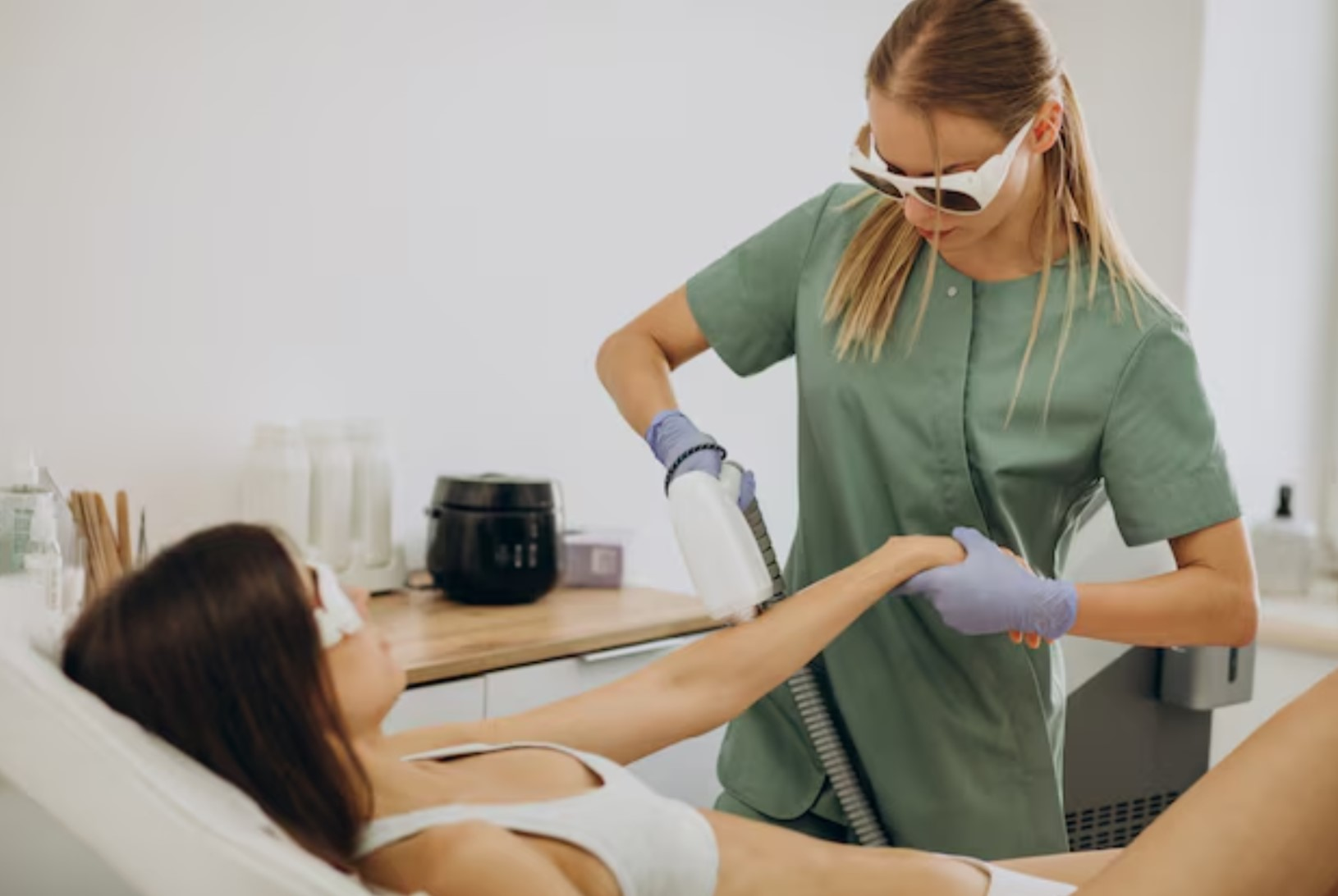Common Side Effects of Laser Hair Removal and How to Manage Them
Unwanted hair may be a significant barrier to many people's attempts to achieve the popular beauty objective of having perfect skin.
Time-consuming, uncomfortable, and only providing temporary effects are some of the drawbacks of traditional hair removal techniques, including shaving, waxing, and plucking. Herein lies the role of laser hair removal.
It promises hairless, smooth skin with less effort and discomfort over time as a better long-term fix. Alternatively, traditional methods offer effective hair removal solutions, though they require more frequent maintenance. For those looking to improve hair growth and health, consider buying a red light therapy device for hair growth. This can be highly beneficial. This device uses specific wavelengths of red light to stimulate hair follicles, promoting hair growth and improving overall hair health, making it an excellent addition to your hair care routine.
Despite the great effectiveness of laser hair removal, it's crucial to understand any possible side effects and how to handle them.
Here is how you can do it:

Understanding Laser Hair Removal
Before delving into how to manage the side effects of laser hair removal, it is important to understand how does laser hair removal work and what exactly it is.
Melanin, a pigment found in hair follicles, is the target of focused light used in laser hair removal. By absorbing the light energy and converting it to heat, the melanin damages the follicle and prevents further development of hair.
Light skinned people with dark hair benefit the most from the treatment since the contrast makes it easier for the laser to target the hair. A skilled practitioner should do the operation in a clinic or medical spa; the best results usually need several sessions.
Common Side Effects of Laser Hair Removal and How to Manage Them
1. Skin Irritation
Skin irritation is one of the most frequent adverse effects of laser hair removal. As a result, the treated region may become red, swollen, or sensitive.
These symptoms often subside in a few hours to a few days, and they are moderate and transient.
Use cold compresses, stay away from hot showers, and use aloe vera gel or calming creams to relieve irritated skin.
2. Pigment Changes
The skin pigmentation of the treated region may vary as a result of laser hair removal, becoming either more or less pigmented.
The likelihood of these alterations is higher in people with darker skin tones or those who have had prior sun exposure either before or after treatment. If possible, protect the treated area from the sun by using sunscreen.
3. Crusting and Blistering
It is possible for the skin to blister or crust after laser hair removal. If there has been recent sun exposure or if the treatment settings are very high, this is more likely to occur.
Maintain cleanliness in the affected region and refrain from picking at the blisters to control crusting and blistering. Recovery can be encouraged by applying an antibiotic ointment to prevent infection and promote healing.
4. Eye Injury
Inadequate measures run the danger of causing eye harm since the hair removal laser produces a focused stream of light.
For the purpose of avoiding unintentional laser beam exposure, the technician and the patient should wear protective glasses during the treatment. Always make sure that the eye protection your practitioner is using is enough.
5. Changes in Hair Texture and Growth
Hair growth and texture changes are rare side effects of laser hair removal. When treated hair gets thicker and darker rather than thinner and lighter, it is known as paradoxical hypertrichosis.
This condition affects some people. Although uncommon, this adverse effect is controllable with proper treatment settings and session spacing.
6. Scarring
Incorrect laser treatment performance can lead to scarring; however, this is uncommon. Inappropriate aftercare or pre-existing skin injury increases the likelihood of this.
Avoid picking at any scabs that form, keep the treatment area moisturized, and adhere to all aftercare recommendations given by your technician to reduce the chance of scarring.
7. Infection
After laser hair removal, a small risk of infection exists; this risk increases if the skin is not adequately cared for. Increased pus, discomfort, swelling, and redness are indicators of infection.
If your technician advises it, use an antibiotic ointment and keep the treated area dry and clean. You should also refrain from contacting it with unclean hands.
8. Temporary Discomfort
After the laser hair removal surgery, some people may feel some brief pain. As with a rubber band cracking on the skin, a slight burning or stinging sensation may be associated with this.
A topical anesthetic may be used by your technician before the treatment to lessen pain. If needed, utilize over-the-counter pain relievers and cold compresses following therapy.
9. Hair Shedding
Hair shedding, in which treated hairs fall out over a few days to weeks, is a typical side effect of laser hair removal. There are instances where this is confused with ongoing hair growth.
Instead of waxing or plucking the region, which can impede the hair removal process, try gently exfoliating the affected area to assist in removing the shedding hair.
10. Folliculitis
Especially in delicate places like the bikini line or underarms, folliculitis, or inflammation of the hair follicles, can develop following laser hair removal. Small, red pimples that may itch or feel painful might be a symptom of this illness.
Resolve any irritation by using a warm compress, keeping the region clean, and avoiding tight clothes while managing folliculitis. Hydrocortisone cream purchased over the counter can also aid in symptom reduction.
Conclusion
Laser hair removal offers the easy and effective possibility of achieving long-term hair reduction. Nevertheless, there are some side effects to take into account and strategies to manage them. By selecting a trustworthy, knowledgeable practitioner and following suggested pre- and post-treatment care, you may lessen the risks and enjoy the benefits of smoother, hair-free skin.